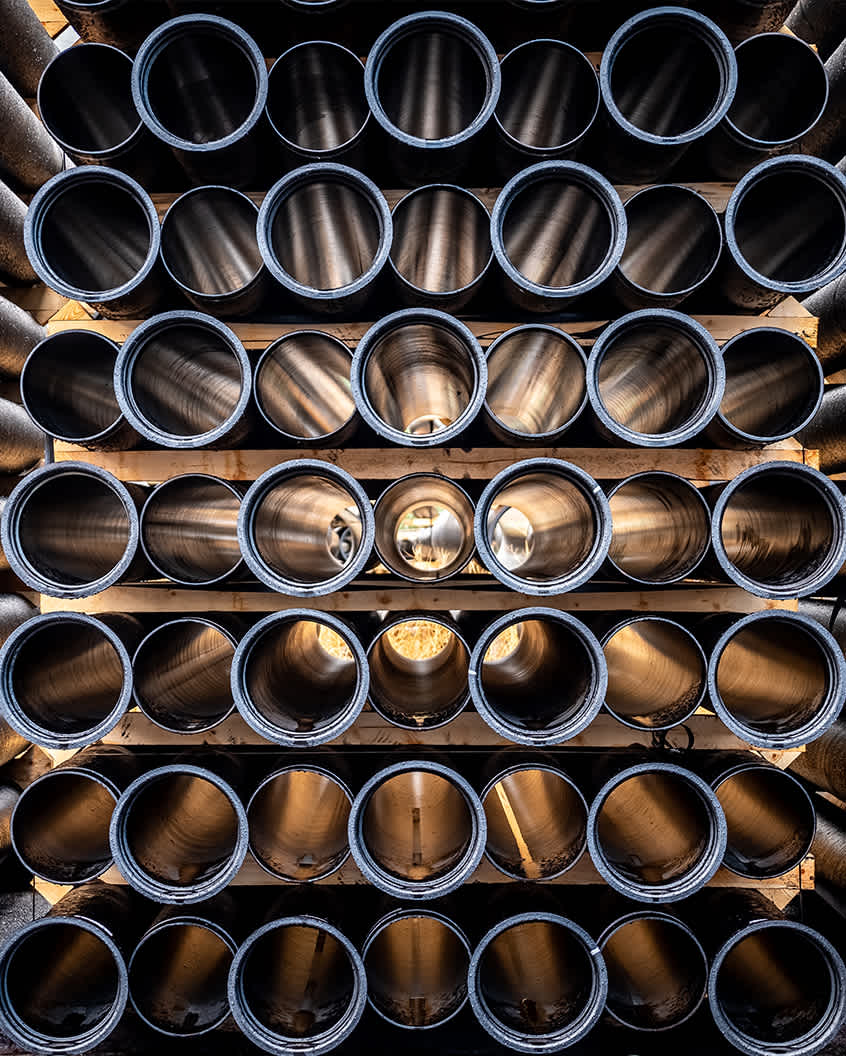Ductile Iron’s Larger Inside Pipe Diameter Saves Energy
In normally specified pipe sizes, cement-mortar lined Ductile iron pipe has an internal diameter larger than the nominal pipe size. For most substitute pipe materials, the inside diameter is equal to or less than the nominal diameter. As a result, for a given flow and size of pipe, mnimum pressure class cement-mortar lined Ductile iron pipe experiences less head loss than substitute material pipelines. This translates into energy savings in pumping and a reduction in the generation of greenhouse gases compared to other pipeline materials. To learn more, download our brochure.
Find more information on hydraulic analysis in our Resource Shelf

Hydraulics Analysis
There are two ways to take advantage of Ductile iron pipe’s larger inside diameter. One is through the savings in energy that results from lower headlosses when pumping through Ductile iron pipe. Another is by designing substitute pipelines to match the headloss advantages of ductile—or by designing Ductile iron pipelines to match the headloss of substitute pipeline materials.
Hydraulic Analysis of Ductile Iron Pipe and Greenhouse Gas Emissions
Friction head loss or drop in pressure in a pipeline is an everyday concern for the water works engineer. Head loss calculations are based on equations developed by hydraulic engineers who conducted numerous flow tests on in-service water mains. Several formulas were developed by Darcy, Chezy, Cutter, Manning, Hazen-Williams, and others. Of these, the formula developed by Hazen-Williams has proven to be the most popular.
To make it easier to perform these analyses DIPRA has developed a free web-based calculator: Hydraulic Analysis of Ductile Iron Pipe, for your free use of this valuable resource.

